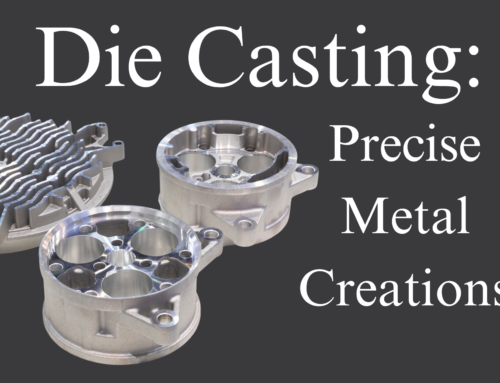A Guide to Sand Casting: The Art of Shaping Metal
When it comes to the art of shaping metal, sand casting stands as a timeless art form. This ancient technique has been used for centuries to create intricate and durable metal objects. Sand casting continues to be a vital technique for metal casting foundries like Quaker City Castings. If you are wondering how solid metal is transformed into intricate pieces for use across multiple industries, look no further. This guide will take you into the captivating world of sand casting.
Whether you are a beginner here to learn about the basics or an experienced professional seeking to hone your skills, this guide will equip you with the knowledge to better understand sand casting. From learning the materials and tools required to grasping the intricate process in casting, we will cover it all.
Discover how we create molds, melt metal, and achieve flawless casts. Dive into the fascinating history of sand casting and learn how it shapes in the world around us. Unleash your creativity as you explore the endless possibilities in sand casting, from airplane parts to energy production, if you can think it we can cast it.
Join us as we unveil the art of shaping metal through sand casting.
The History of Sand Casting
Sand casting has a rich history that dates back thousands of years. It’s origins can be traced back to ancient china during the bronze age, where casting was used to create various objects out of bronze. The technique then spread around to other parts of the world into India and Egypt. In Europe, sand casting gained popularity during the Middle Ages and Renaissance, with craftsman using the casting method to create intricate metalwork for churches and palaces.
Over the centuries, sand casting has evolved and adapted to new technologies and materials. In the 19th century, the introduction of steam powered machines revolutionized the industry, making sand casting faster and more efficient. The 19th century also saw the invention of centrifugal casting, patented by A.G. Eckhart.
Today, modern advancements in computer aided design (CAD) and 3D printing have further enhanced the capabilities of sand casting, allowing for even more complex and precise metal objects to be created. At Quaker City Castings we have harnessed the power of 3D printing in our sand casting process allowing us to create more intricate sand casts that meet all of our customers needs.
Advantages of Sand Casting
Sand casting offers several advantages that make it a preferred method for shaping metal. One of the key advantages is its versatility. t can be used to create objects of various sizes and shapes, from small intricate pieces to large industrial components to meet the needs of any industry. This flexibility makes it suitable for a wide range of applications, including art, architecture, automotive, and aerospace industries
Another advantage is its cost-effectiveness. The materials used in sand casting, such as sand and clay, are readily available and relatively inexpensive. The process itself is also less expensive compared to other metal shaping techniques, such as die casting or investment casting. This makes sand casting a cost-effective choice for both small-scale projects and large-scale production.
Furthermore, sand casting allows for intricate detailing and complex designs. The use of molds enables craftsmen to create highly detailed patterns and textures on the surface of the metal. This makes sand casting ideal for creating decorative objects or replicating intricate historical artifacts.
Sand Casting Process Explained
The sand casting process involves several steps that culminate in the creation of a metal object. The first step is patternmaking, where a pattern is created based on the desired shape of the final object. The pattern is typically made of wood or other materials and serves as a template for the mold.
Once the pattern is ready, the next step is moldmaking. The mold is made by packing a mixture of sand and clay around the pattern. This creates a negative impression of the pattern, which will later be filled with molten metal. The mold is then allowed to dry and harden.
After the mold has dried, the pattern is removed, leaving behind a cavity in the shape of the desired object. This cavity is where the molten metal will be poured. The mold is then assembled, with any necessary cores or inserts added to create internal features or hollow sections.
With the mold prepared, the next step is melting the metal. The type of metal used will depend on the specific requirements of the project. Common metals used in sand casting include aluminum, iron, and bronze. The metal is heated until it reaches its melting point and then poured into the mold.
Once the metal has been poured, it is left to cool and solidify. The cooling process can take several hours or even days, depending on the size and complexity of the object. After the metal has solidified, the mold is removed, revealing the final cast object.
Types of Molds Used in Sand Casting

There are several types of molds used in sand casting, each with its own advantages and limitations. The most common type of mold is the green sand mold. Green sand molds are made using a mixture of sand, clay, and water, which is packed around the pattern. Green sand molds are relatively easy to make and are suitable for casting both ferrous and non-ferrous metals.
Another type of mold is the dry sand mold. Dry sand molds are made using dry sand, without the addition of water or clay. The mold is created by packing the dry sand around the pattern and then hardening it using a binder, such as resin or sodium silicate. Dry sand molds offer better dimensional accuracy and surface finish compared to green sand molds, but they are more expensive and time-consuming to make.
In addition to green sand and dry sand molds, there are also other types of molds used in sand casting, such as shell molds and ceramic molds. Shell molds are made using a mixture of sand and resin, which is poured onto a heated pattern. The resin hardens, forming a shell that can then be used to create the mold. Ceramic molds are made using a mixture of ceramic powders and binders, which are poured or pressed around the pattern. Ceramic molds offer excellent dimensional accuracy and surface finish, but they are more expensive and require specialized equipment.
Materials Suitable for Sand Casting
Sand casting can be used to shape a wide range of metals, including both ferrous and non-ferrous metals. Ferrous metals, such as iron and steel, are commonly used in sand casting due to their strength and durability. Non-ferrous metals, such as aluminum, bronze, and brass, are also commonly used in sand casting, particularly for decorative or artistic objects.
The choice of metal will depend on the specific requirements of the project, such as the desired strength, weight, and corrosion resistance. It is important to select a metal that is compatible with the sand casting process and can be melted and poured easily.
Tools and Equipment Required for Sand Casting

Sand casting requires a variety of tools and equipment to ensure a successful casting. Some of the essential tools and equipment include:
- Pattern-making tools: These include saws, chisels, and carving tools used to shape the pattern.
- Molding tools: These include ramming tools, riddles, and trowels used to pack and shape the sand around the pattern.
- Melting equipment: This includes a furnace or crucible for melting the metal, as well as ladles or pouring devices for transferring the molten metal to the mold.
- Finishing tools: These include files, sandpaper, and polishing equipment used to clean and refine the cast object.
- Safety equipment: This includes protective clothing, gloves, and goggles to ensure the safety of the caster.
It is important to use high-quality tools and equipment to ensure accurate and consistent results. Investing in good quality tools will not only improve the quality of your castings but also make the process more efficient and enjoyable.
Common Defects in Sand Casting and How to Prevent Them
Sand casting is a complex process that requires careful attention to detail to achieve high-quality castings. However, there are several common defects that can occur during the sand casting process. Some of the most common defects include:
- Casting defects: These include shrinkage, porosity, and misruns, which can result in incomplete or defective castings. To prevent casting defects, it is important to properly prepare the mold, control the pouring temperature, and use the appropriate gating and riser system.
- Surface defects: These include sand inclusions, rough surfaces, and surface cracks, which can affect the appearance and functionality of the cast object. To prevent surface defects, it is important to properly clean and prepare the mold, control the pouring temperature, and use the appropriate mold coatings.
- Dimensional defects: These include warping, distortion, and undersized or oversized dimensions, which can result in castings that do not meet the desired specifications. To prevent dimensional defects, it is important to properly design the mold, control the cooling rate of the metal, and use the appropriate shrinkage allowances.
By understanding the causes of these defects and implementing the necessary preventive measures, you can minimize the occurrence of defects and produce high-quality castings.
Applications and Industries That Use Sand Casting

Sand casting has a wide range of applications and is used in various industries around the world. Some of the industries that rely on sand casting include:
- Automotive industry: Sand casting is used to create engine blocks, cylinder heads, and other components for automobiles.
- Aerospace industry: Sand casting is used to create turbine blades, engine casings, and other components for aircraft and spacecraft.
- Art and sculpture: Sand casting is used by artists and sculptors to create intricate and detailed metal sculptures and artwork.
- Architecture and construction: Sand casting is used to create decorative metalwork, such as railings, gates, and lighting fixtures, for buildings and structures.
- Industrial machinery: Sand casting is used to create components for a wide range of industrial machinery, such as pumps, valves, and gears.
The versatility and cost-effectiveness of sand casting make it a popular choice for these industries and many others. Its ability to produce complex and detailed castings, combined with its relatively low cost, makes it an attractive option for both small-scale projects and large-scale production.
The Future of Sand Casting
As technology continues to advance, the future of sand casting looks promising. The integration of computer-aided design (CAD) and 3D printing technologies has already revolutionized the industry, allowing for more complex and precise castings to be created. These advancements have also reduced the time and cost required for patternmaking and moldmaking, making sand casting even more accessible to a wider range of industries and individuals.
Furthermore, ongoing research and development in materials science and process optimization are expected to further enhance the capabilities of sand casting. New materials, such as lightweight alloys and advanced composites, are being developed specifically for sand casting applications. Improvements in process control and automation are also being explored to increase the efficiency and consistency of sand casting.
As we look to the future, it is clear that sand casting will continue to play a vital role in the world of metal shaping. Its versatility, cost-effectiveness, and ability to produce intricate and durable castings make it an enduring and invaluable technique. Whether you’re a hobbyist, an artist, or an industry professional, sand casting offers endless possibilities for creating beautiful and functional metal objects.
Join us as we dive deeper into the captivating world of sand casting and unleash your creativity in shaping metal. The art of sand casting awaits you, ready to inspire and amaze.







Leave A Comment